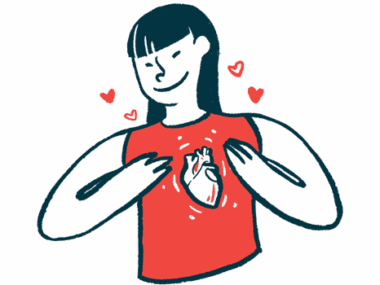How to deal with heat when living with hypoparathyroidism
Hypocalcemia is a serious concern during the summer months
Written by |

As the summer solstice passes by and blazing temperatures roll in, the image of lounging by a pool or lake with a cold alcoholic beverage in hand crosses my mind frequently. In a life without hypoparathyroidism, I suspect that’s exactly what I’d be doing today, as we reach 90 F by 11 a.m. and keep climbing. However, hypopara makes summer more complicated — not only because I experience temperature intolerance, but also because of the way heat impacts my body.
There’s a running joke among my friends that everything lowers calcium. While many things affect my level — from alcohol to exercise to allergies to medications — sweating is one of the big ones. Bodies sweat electrolytes, including calcium. This means that the body’s calcium level can decrease proportionately to how much a person sweats.
Calcium, along with other electrolytes, is necessary to keep the body functioning. When calcium levels are too low, a condition called hypocalcemia, symptoms may include muscle cramps and spasms, confusion, tingling in the extremities and face, hallucinations, arrhythmia, seizure, and heart failure. A person with hypopara who spends time in the heat is at an increased risk of hypocalcemia.
In people without hypopara, the parathyroid glands act like a thermostat and adjusts the calcium level as needed. But for people like me with a broken or missing thermostat, we have to adjust our calcium level externally without an at-home tester. As Michigan slips into an oppressive heatwave, with temperatures bordering triple digits, I need to keep cool and stay hydrated.
While chatting with my hypopara friends, both locally and abroad, I asked them how they stay cool without air conditioning or when they spend time outside. My own home thermostat is dialed down to “refrigerator” to keep my levels steady. The biggest tips were to locate a fan or shade, utilize ice packs or cooling towels, and hydrate with electrolytes.
Applying cool water, damp towels, or ice packs to areas like the base of the skull, inner wrists, temples, and chest can help regulate body temperature. Filling a water bottle halfway and then freezing it is a great on-the-go option. Just fill the remaining half with water when ready for use. The bottle can also fit comfortably against the back of the neck for instant cooling.
I always carry a handheld or neck rechargeable fan with me. Instant cold packs — the kind from the pharmacy that get cold from a chemical reaction — are perfect for when there’s no cooler available. A neck cooling tube, a frozen tube specifically made to go around the neck, is an easy, hands-free solution. My hypopara friend who spends a lot of time outdoors swears by an ice vest. The vest utilizes several ice packs that sit inside multiple pockets to keep the body cool. Large hats, umbrellas, cool showers, and wet towels tossed in the freezer are additional easy ways to stay regulated.
The next important thing is electrolytes and hydration, crucial to hypopara stability, which I spoke about in my column on having a lactose allergy. Sports drinks like Body Armor were a frequently recommended option, as well as easily portable powder packets that mix with a bottle of water, like Liquid IV. It’s important to avoid or limit beverages that are dehydrating, like caffeine and alcohol. Carrying emergency calcium, like a chewable tablet or powdered mix, can also help with acute hypocalcemia. I always check with my doctor before making any dietary changes, just to be on the safe side.
Being inside a hot home is also a concern. Put fans in open windows facing outward to help blow the heat out. Try to avoid using the oven, and instead cook outside on a grill or use appliances like a toaster oven or air fryer that give off less heat. Eat foods that can help with hydration, like cucumbers, watermelon, celery, bananas, and pineapple.
Whether outside in the heat for fun, or battling the weather with no air conditioning, it’s important to stay ahead of a calcium crash when hypopara is involved. By taking a few easy steps, the body can stay more regulated with less need for extensive recovery or medical intervention. For this current heatwave, I’ll be sitting in front of the vent that’s blowing the coldest air and diving into a good book.
Note: Hypoparathyroidism News is strictly a news and information website about the disease. It does not provide medical advice, diagnosis, or treatment. This content is not intended to be a substitute for professional medical advice, diagnosis, or treatment. Always seek the advice of your physician or another qualified health provider with any questions you may have regarding a medical condition. Never disregard professional medical advice or delay in seeking it because of something you have read on this website. The opinions expressed in this column are not those of Hypoparathyroidism News or its parent company, Bionews, and are intended to spark discussion about issues pertaining to hypoparathyroidism.







Ed
Great article. I suggest you add pickles to your list of foods to eat to help with hydration. Added bonus is the pickle juice is an excellent source of electrolytes.
Heather Novak
I absolutely love pickles! Thanks for reading and commenting